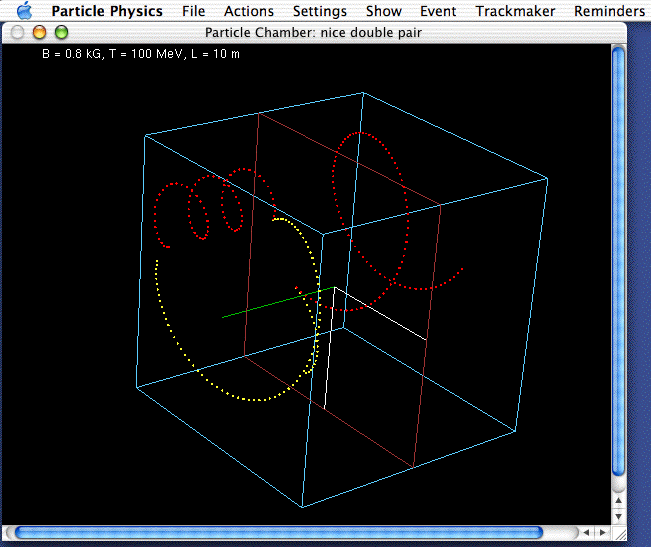The OnScreen Particle Physics™ Detection Chamber
Subatomic particle decay events unfold in space and time in the simulated detection chamber. The events are realistic from the standpoints of particle behavior and detection. The color and 3D graphics grab students immediately. The chamber and this event are described below.
In the event displayed above, a neutral pion (invisible since only charged particles can be seen ) has entered the chamber and decayed into two photons (also invisible). Each photon has then produced an electron-positron pair. The direction of the magnetic field is indicated by the green axis. Electron tracks are shown in red; positron tracks in yellow. Note the opposite sense of curvature for the oppositely charged particles. Injected particle always moves in the plane indicated by brick-red outline.
With the real program you can see the tracks traced out in slow motion, so it's obvious that a matter-antimatter pair originates from a single point. The helical geometry of the tracks also become obvious when you rotate the chamber (about any of its three axes) to view it from different perspectives . Neutral pions are one of six types of particle that can be selected for observation in the chamber. The others are charged pions and muons and the lambda particle.
This or any event occurring in the chamber can be seen in projection views as well. These are more like the bubble chamber photographs you may be familiar with. It is in the projection views that you can measure distances that enable you to determine particle masses.
The user controls the kinetic energy of the injected particle, the chamber size, and the magnetic field strength. Thus students can adjust the experimental conditions based on their observations. Click here to see the controls.
